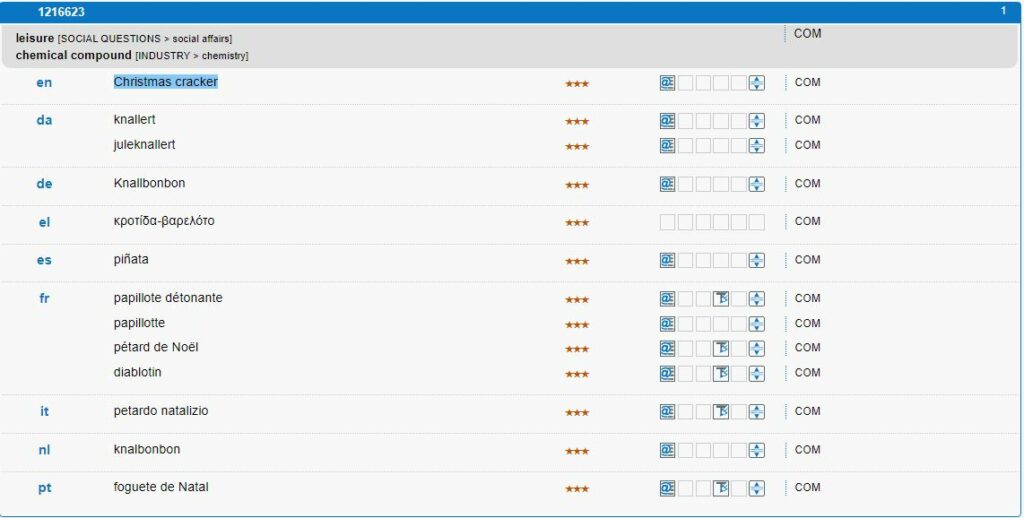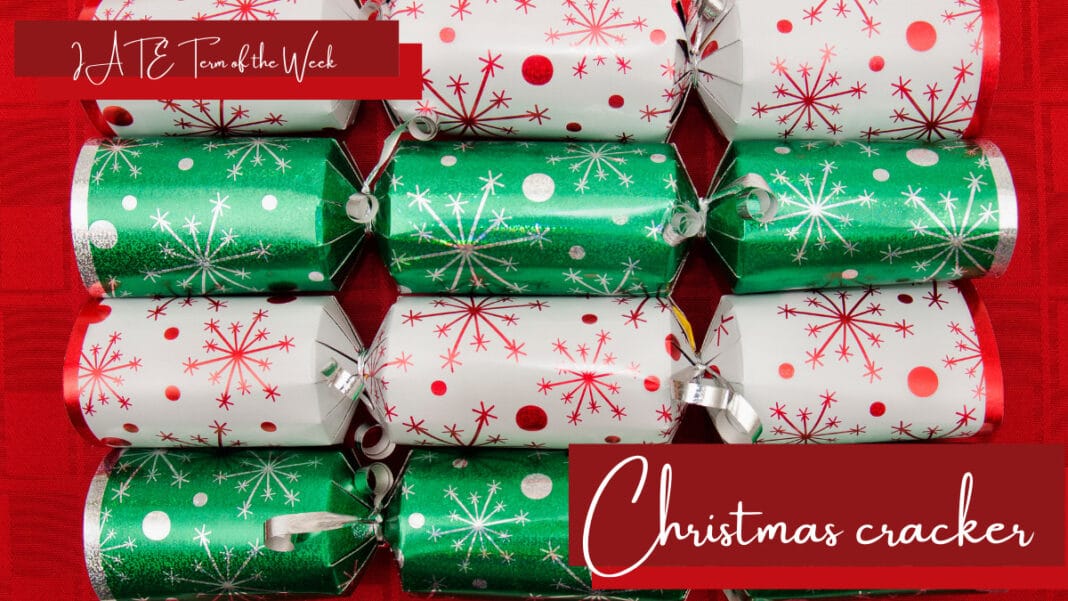The Victorian invention of the Christmas cracker
Christmas crackers have been a part of British Christmas tradition, decorating the individual place settings at dinner tables, since Victorian times. You might wonder where these peculiar objects and its tradition originate from and what you are supposed to do with them.
In the 1840s, the innovative London confectioner and baker Tom Smith (1823-1869) discovered the traditional French bon – bon sweets in Paris and got inspired to sell sweets, sugared almonds, in the bon-bon style with a love poem. He sold the bonbons in a twist of tissue paper, the first non-exploding crackers, in his shop in London’s East End. However, they were not well received. A couple of years later, he enhanced the handmade “Cosaques”, as they were known then, by adding the “bang” to the crackers. A chemist, Tom Brown who worked for Brocks Firework Company, sold him the chemical concept. Two narrow strips of layered paper with silver fulminate on one side and an abrasive surface on the other create a small explosion when friction occurs by the pull. The English chemist Edward Charles Howard (1174-1816) discovered the silver fulminate in 1800. Incorporating this “bang”, lead to an increase in sales.
In 1847, Tom patented his first cracker. Smith then changed the name to “Bangs of Expectation”. After his death in 1869, his three sons Henry, Thomas and Walter took over in later Victorian and Edwardian times. The business grew, left Goswell Road, Clerkenwell and moved to Finsbury Square, employing 2000 people. Walter Smith added the hat in the early 1900s. Apparently, the tradition of hats at parties goes back to Roman Saturnalia celebrations, a festival that took place around the winter solstice. The crackers were used to celebrate major occasions from The Paris Exhibition in 1900 to The World Tour in 1926 of Prince Edward. By the end of 1930s, jokes and limericks were added that replaced the Victorian mottoes and love poems. At some point in time, the sweet was replaced by a little present. In 1906, the company was granted its first Royal Warrant by the Prince of Wales. Tom Smith & Co merged with Caley’s Crackers in 1953 and moved to Norwich and is now owned by International Greetings based in South Wales.
How to pull a Christmas cracker the traditional way
In a group of people, everyone around the table crosses their arms and hold their own cracker and their neighbours’ one and pulls at the same time. This is done either before or after the meal. Inside it, you can find a colourful paper crown, a joke and a little gift. Everyone must wear the paper hat, even if it will ruin your special Christmas hair and there is no time limit for wearing it. Some people take it off after dinner; others would also wear it the next day. They are one-size only ill-fitting crowns, so this colourful hat might move over your eyes and end up somewhere near your nose while eating.
The quality of the cracker depends on how much you are willing to spend. They range from luxurious to fun-sized. In the cheaper crackers, you would find a large plastic paper clip, a fake moustache, pens, nail clippers, a tape measure or cardboard puzzles. The more expensive ones would include clockwork teeth, a water pistol or a harmonica. You can also buy the luxurious cracker set containing silver-plated staplers, earrings or cuff links. The other customary item inside is the joke. By tradition, the jokes have to be bad. Everyone has to read out his or her intentionally bad joke.
Would you like to read some of these jokes? Visit our Facebook or Instagram account to have a good laugh.
Facebook: European Terminology
Instagram: Termineurope

References
The King of crackers. 2020. Christmas crackers. [ONLINE] Available at: http://www.thekingofcrackers.co.uk/index.htm. [Accessed 17 December 2020].
Victoria and Albert Museum. 2020. The Christmas cracker. [ONLINE] Available at: https://www.vam.ac.uk/articles/the-christmas-cracker. [Accessed 17 December 2020].
History extra. 2020. Christmas cracker. [ONLINE] Available at: https://www.historyextra.com/period/victorian/the-history-of-christmas-crackers/. [Accessed 17 December 2020].

Written by

